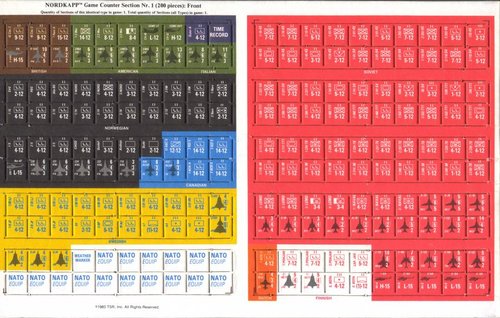You are using an out of date browser. It may not display this or other websites correctly.
You should upgrade or use an alternative browser.
You should upgrade or use an alternative browser.
Canada buys the A-4 Skyhawk
- Thread starter uk 75
- Start date
isayyo2
Lurker alert
- Joined
- 24 November 2011
- Messages
- 1,131
- Reaction score
- 2,331
SSgtC
ACCESS: Top Secret
- Joined
- 13 July 2020
- Messages
- 1,241
- Reaction score
- 2,891
You need to get Canada to decide that Bonnaveture needs at least rudimentary fighter cover while performing her ASW mission. That is likely to lead to either a small A-4 purchase or having a USN or USMC flight serve onboard alongside the RCN
- Joined
- 25 July 2007
- Messages
- 4,299
- Reaction score
- 4,197
As SSgtC points out, in her final years, the mission for HMCS Bonaventure was purely ASW. The Royal Canadian Navy retired its last Banshee in 1962 and that was the end of Canadian naval fighters. As for working with the USN/USMC, politically, having US aircraft embarked would have been a non-starter.
The timing shows that the CA-4E/CA-4F were being pitched at the RCAF not the RCN. This was for the RCAF 'lightweight fighter' requirement which would won by the Freedom Fighter. The RCAF preferred the Phantom although how the F-4 qualified as 'lightweight', I don't know. (Apparently, neither did the GoC.)
By all accounts, Northrop won with the CF-116 on the grounds of low cost (purchase and operating), twin-engined reliability (in contrast to CF-104 experience), and a willingness for license-production of airframes (by Canadair) and engines (by Orenda).
The timing shows that the CA-4E/CA-4F were being pitched at the RCAF not the RCN. This was for the RCAF 'lightweight fighter' requirement which would won by the Freedom Fighter. The RCAF preferred the Phantom although how the F-4 qualified as 'lightweight', I don't know. (Apparently, neither did the GoC.)
By all accounts, Northrop won with the CF-116 on the grounds of low cost (purchase and operating), twin-engined reliability (in contrast to CF-104 experience), and a willingness for license-production of airframes (by Canadair) and engines (by Orenda).
- Joined
- 27 September 2006
- Messages
- 6,417
- Reaction score
- 6,819
It can be added that the Dutch and Norwegian Air Forces also ordered F5s to serve in NATO alongside the Canadian ones.
Although Bonnie became an ASW carrier (CVS) some A4s in the anti-snooper role would have been useful as in the US ships. The Dutch might then have followed suit with their carrier.
A4s would have given Canadian, Dutch and Norwegian units the same kit as the USMC also reinforcing Norway.
Although Bonnie became an ASW carrier (CVS) some A4s in the anti-snooper role would have been useful as in the US ships. The Dutch might then have followed suit with their carrier.
A4s would have given Canadian, Dutch and Norwegian units the same kit as the USMC also reinforcing Norway.
- Joined
- 11 March 2012
- Messages
- 3,251
- Reaction score
- 3,179
Dear issayo2,
After World War 2, Canada rapidly de-armed as the Federal Gov't built a cradle-to-grave welfare state, socialized medicine, education for Baby-Boomers, etc.
This was financed by Canada's booming post-war economy and massive defense cuts.
Canadian admirals were still trying to fight the last war with "big ships" even though the defense budget could not support "big ships." By the late 1950s, the RCN returned their focus to ASW in support of convoy-escort with big helicopters flying from small ships, hence the Bear Trap system to land 21,000 pound Sikorsky Sea King helicopters on small DDE and DDH destroyers.
This narrowed ASW focus forced them to abandon jet fighters. Banshees were obsolete by 1960, so HMCS Bonaventure only carried Trackers and Sea Kings during her last few voyages.
I doubt if A4 Skyhawk could have seriously defended a convoy since it was sub-sonic and primarily designed for ground attack. Look at (British Royal Navy) experience flying (similar sub-sonic performance) Harriers during the Falklands War. RN Sea Harriers downed 20 Argentine aircraft including helicopters, transports, A-4 Skyhawks and Mirage IIIs. RN attribute their zero air combat losses to superior piloting, though Argentine pilots were certainly courageous. RAF Harriers did not score any air-to-air kills because they were only configured for ground attack.
The CF-5 Freedom Fighters were a political diversion. Quebec Separatists were getting uppity during the 1960s, so the Federal Gov't "bought votes" on Montreal Island by license-building CF-5s at Canadair. Since then, all federal contracts have been biased towards Quebec. The RCAF struggled to find a combat role for these short-legged, light-weight fighters. Propaganda photos showed CF-5s refuelling from Boeing 707s while patrolling the Canadian Arctic. Hah!
The RCAF only ever had a pair of Boeing 707s and they were heavily tasked with a dozen other missions.
CF-5s were so short-legged that they could barely deliver a full bomb load to the end of their own runways! Eventually CF-5s were relegated to photo-recon and lead-in trainers for more expensive supersonic fighters (CF-101 Voodoos, CF-104 Starfighters and CF-188 Hornets).
The RCAF inherited USAF-surplus CF-101 Voodoos by default. After the cancelled CF-105 Avro Arrow and disappointing Bomark missle, the RCAF still needed long-range interceptors to chase Russian Bears away from Canadian shores. Fortunately, during the mid-1960s, the USAF was retiring their F-101 interceptors in favor of multi-mission F-4 Phantoms. The trade also included some RCAF instructor pilots posted to Texas to train young American pilots.
The RCAF would have preferred multi-mission F-4 Phantoms, but all the production was destined for the Vietnam War.
P.S. I worked on the flight decks of HMCS Iroquois and HMCS Athabaskan during the early 1980s.
After World War 2, Canada rapidly de-armed as the Federal Gov't built a cradle-to-grave welfare state, socialized medicine, education for Baby-Boomers, etc.
This was financed by Canada's booming post-war economy and massive defense cuts.
Canadian admirals were still trying to fight the last war with "big ships" even though the defense budget could not support "big ships." By the late 1950s, the RCN returned their focus to ASW in support of convoy-escort with big helicopters flying from small ships, hence the Bear Trap system to land 21,000 pound Sikorsky Sea King helicopters on small DDE and DDH destroyers.
This narrowed ASW focus forced them to abandon jet fighters. Banshees were obsolete by 1960, so HMCS Bonaventure only carried Trackers and Sea Kings during her last few voyages.
I doubt if A4 Skyhawk could have seriously defended a convoy since it was sub-sonic and primarily designed for ground attack. Look at (British Royal Navy) experience flying (similar sub-sonic performance) Harriers during the Falklands War. RN Sea Harriers downed 20 Argentine aircraft including helicopters, transports, A-4 Skyhawks and Mirage IIIs. RN attribute their zero air combat losses to superior piloting, though Argentine pilots were certainly courageous. RAF Harriers did not score any air-to-air kills because they were only configured for ground attack.
The CF-5 Freedom Fighters were a political diversion. Quebec Separatists were getting uppity during the 1960s, so the Federal Gov't "bought votes" on Montreal Island by license-building CF-5s at Canadair. Since then, all federal contracts have been biased towards Quebec. The RCAF struggled to find a combat role for these short-legged, light-weight fighters. Propaganda photos showed CF-5s refuelling from Boeing 707s while patrolling the Canadian Arctic. Hah!
The RCAF only ever had a pair of Boeing 707s and they were heavily tasked with a dozen other missions.
CF-5s were so short-legged that they could barely deliver a full bomb load to the end of their own runways! Eventually CF-5s were relegated to photo-recon and lead-in trainers for more expensive supersonic fighters (CF-101 Voodoos, CF-104 Starfighters and CF-188 Hornets).
The RCAF inherited USAF-surplus CF-101 Voodoos by default. After the cancelled CF-105 Avro Arrow and disappointing Bomark missle, the RCAF still needed long-range interceptors to chase Russian Bears away from Canadian shores. Fortunately, during the mid-1960s, the USAF was retiring their F-101 interceptors in favor of multi-mission F-4 Phantoms. The trade also included some RCAF instructor pilots posted to Texas to train young American pilots.
The RCAF would have preferred multi-mission F-4 Phantoms, but all the production was destined for the Vietnam War.
P.S. I worked on the flight decks of HMCS Iroquois and HMCS Athabaskan during the early 1980s.
Last edited:
isayyo2
Lurker alert
- Joined
- 24 November 2011
- Messages
- 1,131
- Reaction score
- 2,331
Many thanks @riggerrob for your insightful post!
- Joined
- 27 September 2006
- Messages
- 6,417
- Reaction score
- 6,819
Very much agree.Many thanks @riggerrob for your insightful post!
My suggestion about A4s was based purely on my understanding of Canada's NATO roles.
On a CVS a handful were only intended as anti-snooper patrols against Bears and Badgers (the original role of Harriers on the Invincibles)
I always saw the F5s as being Norway based reinforcements.
But your account sets out the real world position.
RN Type 12s with bear traps and Seakings would have been very handy.
I think Canada cropped up during the lengthy UK Phantom procurement saga as a possible partner.
There was proposal in mid 1964 by the Navy to purchase 21 A4s along with modifications to several DDEs to carry ASROC . As well as mid life refits to the Trackers and new Minesweepers.
And because Nothing's to good for our boys in service....that's pretty much what they got.
Actually what they got instead were the Tribal class DDHs and the ASROC Not a total loss of course and they were needed if only to keep the ability to build warships alive. And over the course of their lives they contributed immeasurably to navy and the nation.
but I can't help but wonder how much more the navy could have contributed if only the proposal had even been considered by the Government of the day.
As for Norway or as the troops called it "Hong Kong north" ,was purely a political decision made as much for domestic consumption as for NATO's .
There was never any intent by the Government to honour that commitment .
Which quite frankly was just as well . It would have made the charge of the Light Brigade look like a.sensible military operation.
In the early to mid eighties the Conservative government actually tried to conduct an exercise deploying the CAST brigade. It was an extremely bad joke and thankfully just an exercise.
And because Nothing's to good for our boys in service....that's pretty much what they got.
Actually what they got instead were the Tribal class DDHs and the ASROC Not a total loss of course and they were needed if only to keep the ability to build warships alive. And over the course of their lives they contributed immeasurably to navy and the nation.
but I can't help but wonder how much more the navy could have contributed if only the proposal had even been considered by the Government of the day.
The CF 5 was a political plane if ever there was one. I had a cousin who flew one back in the day. And as much.as he loved flying them . He was quite well aware of their faults. Range of course being the biggest problem.Very much agree.Many thanks @riggerrob for your insightful post!
My suggestion about A4s was based purely on my understanding of Canada's NATO roles.
On a CVS a handful were only intended as anti-snooper patrols against Bears and Badgers (the original role of Harriers on the Invincibles)
I always saw the F5s as being Norway based reinforcements.
But your account sets out the real world position.
RN Type 12s with bear traps and Seakings would have been very handy.
I think Canada cropped up during the lengthy UK Phantom procurement saga as a possible partner.
As for Norway or as the troops called it "Hong Kong north" ,was purely a political decision made as much for domestic consumption as for NATO's .
There was never any intent by the Government to honour that commitment .
Which quite frankly was just as well . It would have made the charge of the Light Brigade look like a.sensible military operation.
In the early to mid eighties the Conservative government actually tried to conduct an exercise deploying the CAST brigade. It was an extremely bad joke and thankfully just an exercise.
- Joined
- 27 September 2006
- Messages
- 6,417
- Reaction score
- 6,819
Canadian Air-Sea Transportable Brigade Group - Wikipedia
 en.m.wikipedia.org
en.m.wikipedia.org
Reinforces GK Dundas post above
- Joined
- 27 September 2006
- Messages
- 6,417
- Reaction score
- 6,819
Canada did a good job of bluffing NATO and its allies.
This American boardgame published in 1983 reflected that misplaced optimism
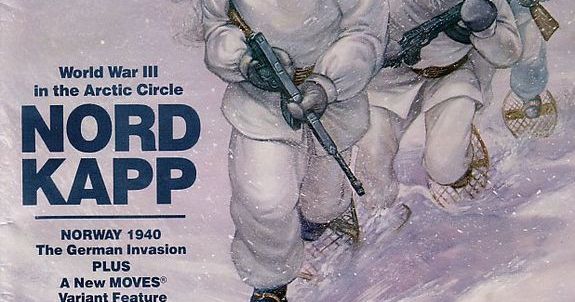
 boardgamegeek.com
boardgamegeek.com
This American boardgame published in 1983 reflected that misplaced optimism

Nordkapp
This is the issue game for Strategy & Tactics magazine #94. Nordkapp is a two player game covering potential warfare between NATO and the USSR in the area of Scandinavia north of the Arctic Circle. The game presumes this action to be part of a general European war taking place in the late...
Attachments
Last edited:
To be fair it wasn't just the politicians fault.Canada did a good job of bluffing NATO and its allies.
This American boardgame published in 1983 reflected that misplaced optimism

Nordkapp
This is the issue game for Strategy & Tactics magazine #94. Nordkapp is a two player game covering potential warfare between NATO and the USSR in the area of Scandinavia north of the Arctic Circle. The game presumes this action to be part of a general European war taking place in the late...boardgamegeek.com
Between the interservice rivalry (which wasn't even supposed to exist anymore because of unification done some twenty years before.) And the military had lost the ability to basically deploy and fight a war.
It was a real wake-up call. And there are still gaps in our capabilities to do this .
- Joined
- 25 July 2007
- Messages
- 4,299
- Reaction score
- 4,197
Non-Canadians may want to just skip past this bit ... 
riggerrob: Following GK Dundas' lead, I would argue that the RCN's failure to gain "big ships" had more to do with how the DND budget was divvied up. Naval and Army procurement came in a poor second and third behind the "the Big Air Force" concept (although that had crested by the time of Diefenbaker). The Directorate of Air Requirements also plays a much bigger part in its own 'disappointments' than is usually acknowledged.
You are quite right about Canada's postwar disarmament. But that brings up the persistent story about a Canadian postwar economic boom. The postwar period was certainly much better in Canada than the '30s. But boom times? I would argue that some of that viewpoint represented a 'contact high' with then-phenomenal US economic growth. Certainly basic Canadian economic health was better than today - many jobs were for life; a higher education wasn't an invitation to endless debt; and suburban sprawl was proceeding apace with affordable, fixed-rate mortgages. [1] But ... cherry-picking here from economic indicators ... what about growth in Canadian jobs?
Job-creation under St. Laurent and Diefenbaker (1948-1963) was stagnate at 1.8% (the lowest post-WW2 Canadian job numbers other than under Stephen Harper). Contrast with Harry Truman (1945-1953). Under Truman, US job growth averaged 15.4%. Even scaling for population (1948 Canada 12.8M vs US 146.6M) Truman's added 8.1M new positions would work out to something like 688,500 Canadian jobs. (If only!) My point being, US administrations had the income tax revenue to finance major military procurement.
For smaller economies, procurement is far trickier. As an example, take the New Fighter Aircraft project which was to replace the CF-5 (and others). That LPC policy-reversal was directed, in part, by CAST. But NPA deliveries didn't begin until 1982 - when the new PC GoC were in the midst of a major recession with 12.8% unemployment (up 50% in a year and the highest since 1934). Small wonder then, under such conditions, that the Mulroney Tories promised much but proved willing to pay for very little.
CF-5: Ottawa's pandering to Quebec far predates the souverainistes. Quebec votes can make or break Canadian governments so that bias is tied to basic political survival. On the other hand, has there ever been a peacetime fighter buy that wasn't inherently political? Nor was there anything unusual at the time for license production arrangements - many of Canada's NATO allies had similar deals. BTW, your 'Sea Thing' (RCN CHSS-2) was also nailed together in Quebec - at UAC Longueuil (the old Fairchild Aircraft plant, IIRC)
Sure there was a political bias towards Cartierville-based Canadair. But, the fact is, no other Canadian firm had experience in modern fighter construction. Canadair did - with the CL-90 Starfighters and the CL-13 Sabres before them. Canadair was also a subsidiary of Electric Boat/General Dynamics. So, RIBs + indirect income for US industry (although the latter can be easily overstated. I haven't checked but I suspect that the US taxpayer funded most if not all of the Netherlands' Canadair NF-5 purchase).
I would also emphasize that the original intended role for those 'lightweight fighters' was as lead-in tactical trainers to take heat off of the CF-104 fleet. All that predated CAST. It could be argued that the 1968 formation of CAST was the perfect opportunity for RCAF planners to argue for pushing the 'Supersonic Tinkertoys' back to their original tactical training role after buying a few Harriers for CAST. Still, back in the RW, it is worth remembering that one reason that the job fell to the CF-5s was that the Luftforsvaret were then flying similar Northrop F-5A(G) fighters (operational 1966-2000).
Apologies for being so long. And now we return to our regularly schedule programming ...
________________________
[1] Here, I'm not suggesting that the GoC has been 'cooking the books'. Only that they have always been highly selective in how their chosen statistics 'paint the picture' they want displayed. And, of course, statistics began much more GoC-friendly when StatsCan started omitting inconvenient numbers circa 1976.
As an even more OT comment, note that the GoC rarely acknowledges that Britain was paying Ottawa back for war debts until 2006. I find that odd. There is often public comment on UK repayments to the US (totalling £3.8B/US$7.5B) but rarely about the (£1B/US$2B) to Canada. As per capita numbers, those Canadian repayments are obviously much more significant and have been awfully handy for making GoC budgets look more balanced.
...This was financed by Canada's booming post-war economy and massive defense cuts...
riggerrob: Following GK Dundas' lead, I would argue that the RCN's failure to gain "big ships" had more to do with how the DND budget was divvied up. Naval and Army procurement came in a poor second and third behind the "the Big Air Force" concept (although that had crested by the time of Diefenbaker). The Directorate of Air Requirements also plays a much bigger part in its own 'disappointments' than is usually acknowledged.
You are quite right about Canada's postwar disarmament. But that brings up the persistent story about a Canadian postwar economic boom. The postwar period was certainly much better in Canada than the '30s. But boom times? I would argue that some of that viewpoint represented a 'contact high' with then-phenomenal US economic growth. Certainly basic Canadian economic health was better than today - many jobs were for life; a higher education wasn't an invitation to endless debt; and suburban sprawl was proceeding apace with affordable, fixed-rate mortgages. [1] But ... cherry-picking here from economic indicators ... what about growth in Canadian jobs?
Job-creation under St. Laurent and Diefenbaker (1948-1963) was stagnate at 1.8% (the lowest post-WW2 Canadian job numbers other than under Stephen Harper). Contrast with Harry Truman (1945-1953). Under Truman, US job growth averaged 15.4%. Even scaling for population (1948 Canada 12.8M vs US 146.6M) Truman's added 8.1M new positions would work out to something like 688,500 Canadian jobs. (If only!) My point being, US administrations had the income tax revenue to finance major military procurement.
For smaller economies, procurement is far trickier. As an example, take the New Fighter Aircraft project which was to replace the CF-5 (and others). That LPC policy-reversal was directed, in part, by CAST. But NPA deliveries didn't begin until 1982 - when the new PC GoC were in the midst of a major recession with 12.8% unemployment (up 50% in a year and the highest since 1934). Small wonder then, under such conditions, that the Mulroney Tories promised much but proved willing to pay for very little.
CF-5: Ottawa's pandering to Quebec far predates the souverainistes. Quebec votes can make or break Canadian governments so that bias is tied to basic political survival. On the other hand, has there ever been a peacetime fighter buy that wasn't inherently political? Nor was there anything unusual at the time for license production arrangements - many of Canada's NATO allies had similar deals. BTW, your 'Sea Thing' (RCN CHSS-2) was also nailed together in Quebec - at UAC Longueuil (the old Fairchild Aircraft plant, IIRC)
Sure there was a political bias towards Cartierville-based Canadair. But, the fact is, no other Canadian firm had experience in modern fighter construction. Canadair did - with the CL-90 Starfighters and the CL-13 Sabres before them. Canadair was also a subsidiary of Electric Boat/General Dynamics. So, RIBs + indirect income for US industry (although the latter can be easily overstated. I haven't checked but I suspect that the US taxpayer funded most if not all of the Netherlands' Canadair NF-5 purchase).
I would also emphasize that the original intended role for those 'lightweight fighters' was as lead-in tactical trainers to take heat off of the CF-104 fleet. All that predated CAST. It could be argued that the 1968 formation of CAST was the perfect opportunity for RCAF planners to argue for pushing the 'Supersonic Tinkertoys' back to their original tactical training role after buying a few Harriers for CAST. Still, back in the RW, it is worth remembering that one reason that the job fell to the CF-5s was that the Luftforsvaret were then flying similar Northrop F-5A(G) fighters (operational 1966-2000).
Apologies for being so long. And now we return to our regularly schedule programming ...
________________________
[1] Here, I'm not suggesting that the GoC has been 'cooking the books'. Only that they have always been highly selective in how their chosen statistics 'paint the picture' they want displayed. And, of course, statistics began much more GoC-friendly when StatsCan started omitting inconvenient numbers circa 1976.
As an even more OT comment, note that the GoC rarely acknowledges that Britain was paying Ottawa back for war debts until 2006. I find that odd. There is often public comment on UK repayments to the US (totalling £3.8B/US$7.5B) but rarely about the (£1B/US$2B) to Canada. As per capita numbers, those Canadian repayments are obviously much more significant and have been awfully handy for making GoC budgets look more balanced.
- Joined
- 11 March 2012
- Messages
- 3,251
- Reaction score
- 3,179
Dear Apophenia,
Thanks for filling in the statistical and political back-story.
I was born in Sherbrooke, Quebec during 1957, so grew up in the whole FLQ era and by 1975, QPP made it clear that I no longer counted as a "white man" in my home town, in front of my grand-mother's house. Most of my generation moved out.
Yes those Canadian Sea King helicopters were bolted together in Longeuil. Supposedly, they were supposed to be the start of a much larger production line, but the RCN was their only customer. I question the profitability of manufacturing parts in Connecticut, crating them, shipping them to Quebec, un-crating them and bolting them together in Quebec. ... but at least it bought Ottawa politicians a few votes.
Thanks for filling in the statistical and political back-story.
I was born in Sherbrooke, Quebec during 1957, so grew up in the whole FLQ era and by 1975, QPP made it clear that I no longer counted as a "white man" in my home town, in front of my grand-mother's house. Most of my generation moved out.
Yes those Canadian Sea King helicopters were bolted together in Longeuil. Supposedly, they were supposed to be the start of a much larger production line, but the RCN was their only customer. I question the profitability of manufacturing parts in Connecticut, crating them, shipping them to Quebec, un-crating them and bolting them together in Quebec. ... but at least it bought Ottawa politicians a few votes.
- Joined
- 11 March 2012
- Messages
- 3,251
- Reaction score
- 3,179
by Jim Atwood
"In July 1957 I was posted to NDHQ-DAE to work with Cmdr Jim Hunter in the search for a new fighter to replace the Banshee. This study was appropriately named "Project Holy Grail". Jim had already looked at UK aircraft, one being the Saunders-Roe SR.177, a combined rocket/jet propulsion proposal (interesting by frightening), and I joined him to evaluate some US aircraft. We compared Bonaventure's capabilities with data from the Douglas A4D, Grumman F11F, North American Fury and Northrup N.156 (later developed into the CF-5).
Later in 1964, an A4E flight characteristics evaluation of some 8 hours was conducted by Dave Tate and Joe Sosnkowski at the Douglas facility in Palmdale, California. Following theses flights, in 1965, carrier suitability trials were flown by two USN pilots aboard Bonaventure. The results concluded that the A4E was acceptable for service use aboard Bonaventure under the operating conditions tested."
quoted from page 93 of "Certified Serviceable Swordfish to Sea King, The Technical Story of Canadian Naval Aviation by Those Who Made It So."
Written by Captain Rolfe G. Monteith CD, R.C.N. (Ret'd), edited by Peter Charlton and Michael Whitby.
Copyright 1995, CHATH Book Project,
ISBN 0-9699595-0-8
The book tells the story of RCN aircraft maintenance from the prospective of Air Engineering Officers.
Somewhere else I read that A4E could launch a full load with only 10 knots of wind across the flight deck of Bonaventure.
"In July 1957 I was posted to NDHQ-DAE to work with Cmdr Jim Hunter in the search for a new fighter to replace the Banshee. This study was appropriately named "Project Holy Grail". Jim had already looked at UK aircraft, one being the Saunders-Roe SR.177, a combined rocket/jet propulsion proposal (interesting by frightening), and I joined him to evaluate some US aircraft. We compared Bonaventure's capabilities with data from the Douglas A4D, Grumman F11F, North American Fury and Northrup N.156 (later developed into the CF-5).
Later in 1964, an A4E flight characteristics evaluation of some 8 hours was conducted by Dave Tate and Joe Sosnkowski at the Douglas facility in Palmdale, California. Following theses flights, in 1965, carrier suitability trials were flown by two USN pilots aboard Bonaventure. The results concluded that the A4E was acceptable for service use aboard Bonaventure under the operating conditions tested."
quoted from page 93 of "Certified Serviceable Swordfish to Sea King, The Technical Story of Canadian Naval Aviation by Those Who Made It So."
Written by Captain Rolfe G. Monteith CD, R.C.N. (Ret'd), edited by Peter Charlton and Michael Whitby.
Copyright 1995, CHATH Book Project,
ISBN 0-9699595-0-8
The book tells the story of RCN aircraft maintenance from the prospective of Air Engineering Officers.
Somewhere else I read that A4E could launch a full load with only 10 knots of wind across the flight deck of Bonaventure.
- Joined
- 27 September 2006
- Messages
- 6,417
- Reaction score
- 6,819
Thanks everyone. I am finding this fascinating and certainly fleshes out my limited knowledge of Canada in relation to NATO.
At school.and university I had access to board wargames which were popular in the 1970s.
Two such games have a Canadian flavour.
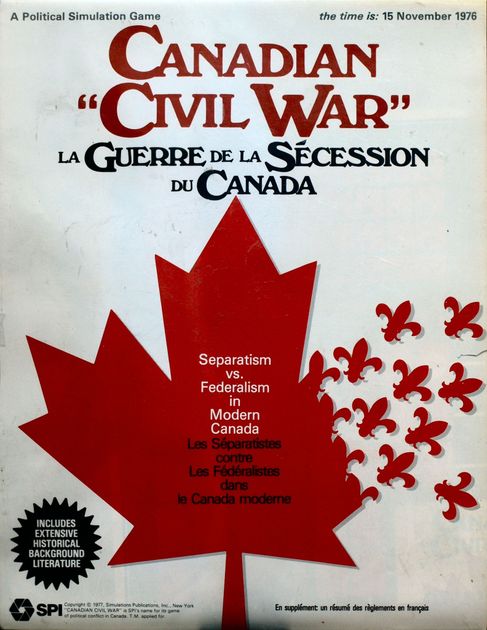
 boardgamegeek.com
This game came with a full article about Canadian politics but also its military.
boardgamegeek.com
This game came with a full article about Canadian politics but also its military.
The second game was a very simple ship vs ship enounter between NATO and the Sovs produced by a Canadian firm.
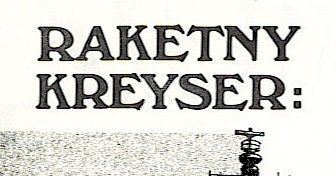
 boardgamegeek.com
A decade later I found myself as a civil servant attached for a couple of years to the British mission at NATO HQ in Brussels. During the annual staff exercise (Wintex) I bought a copy of another Canadian boardgame
boardgamegeek.com
A decade later I found myself as a civil servant attached for a couple of years to the British mission at NATO HQ in Brussels. During the annual staff exercise (Wintex) I bought a copy of another Canadian boardgame

 boardgamegeek.com
It was interesting using the simple map and counters in the game to follow the bigger version on the wall in our office. CAST of course featured.
boardgamegeek.com
It was interesting using the simple map and counters in the game to follow the bigger version on the wall in our office. CAST of course featured.
At school.and university I had access to board wargames which were popular in the 1970s.
Two such games have a Canadian flavour.

Canadian Civil War: La Guerre de la Sécession du Canada
The players of Canadian Civil War control the government officials, interest groups, and constituencies who adhere to various schools of thought in regard to Separatism vs. Federalism. It is the interaction among players during any given turn that affects the course of the game. The game map...
The second game was a very simple ship vs ship enounter between NATO and the Sovs produced by a Canadian firm.

Raketny Kreyser
Raketny Kreyser: Tactical Naval Combat, 1975-1999, is a game simulation of tactical naval warfare as it might occur in the late 1970's thru the 1990's. The naval and/or naval air forces of the U.S., the U.S.S.R., the U.K., the P.R.C., Canada, Turkey, Greece, Norway, Denmark, Sweden, W.Germany...

Seapower & the State
Seapower & the State is a Strategic level board-wargame, a simulation of potential future naval combat during World War 3. The viewpoint of the simulation is that of grand strategy and thus has the players acting as the overall commanders of the naval forces of the Eastern or Western alliances...
Last edited:
- Joined
- 11 March 2012
- Messages
- 3,251
- Reaction score
- 3,179
Dear uk 75,
Your lack of knowledge about Canadian politics and military affairs is nothing unusual.
Don't feel bad because the Canadian public was kept in the dark about most military activities and serving soldiers knew only slightly more.
My knowledge has accumulated since I was born in Quebec (1957), served in the Canadian Armed Forces (1974 to 1987) and read extensively ever since.
For example, I did not know that nuclear weapons were stationed in Canada until the day I jogged past a bomb dump guarded by USAF Air Police.
Your lack of knowledge about Canadian politics and military affairs is nothing unusual.
Don't feel bad because the Canadian public was kept in the dark about most military activities and serving soldiers knew only slightly more.
My knowledge has accumulated since I was born in Quebec (1957), served in the Canadian Armed Forces (1974 to 1987) and read extensively ever since.
For example, I did not know that nuclear weapons were stationed in Canada until the day I jogged past a bomb dump guarded by USAF Air Police.
A couple years ago during a late night conversation among some friends. Someone suggested that if the navy could have actually gotten it's act together. It might have been able to acquire a large part of it's wish list. Not every thing of course but a fair bit.
However that would have required the various heads of the branches of the navy to behave like responsible and reasonable adults as opposed to spoiled 4 year olds.
This would have included a Director of Naval Aviation who viewed getting an Essex class carrier as an interim step to his eventual goal of a mini version of the Enterprise complete with nuclear propulsion!
Destroyer types who were convinced that that in spite of all evidence to the contrary that all we needed were an all destroyer/frigate fleet.
That doesn't even cover the army and the air force all of which were living in their own private little universes.
and the we had the department's civil servants...
However that would have required the various heads of the branches of the navy to behave like responsible and reasonable adults as opposed to spoiled 4 year olds.
This would have included a Director of Naval Aviation who viewed getting an Essex class carrier as an interim step to his eventual goal of a mini version of the Enterprise complete with nuclear propulsion!
Destroyer types who were convinced that that in spite of all evidence to the contrary that all we needed were an all destroyer/frigate fleet.
That doesn't even cover the army and the air force all of which were living in their own private little universes.
and the we had the department's civil servants...
- Joined
- 25 July 2007
- Messages
- 4,299
- Reaction score
- 4,197
riggerrob: You grew up in the cauldron! Plenty of souverainistes will have cheered on the exodus of les Anglais and allophones. Then, if I've got this right, Quebec moves from being favoured for votes to needing preferential treatment to survive economically. (If that's not the case, it is hard to understand many Canadian trade practices of the past quarter century).
CH-124s: Interesting about anticipated export of further UAC-assembled Sea Kings. Any idea who they had in mind for customers? Mind you, I'm also reminded of the Halifax class 20 years later. The FFHs would basically pay for themselves. First, guaranteed export customer was Saudi Arabia, the second was ... oh wait, none of that ever happened ;p
Interesting stuff about aircraft evaluated for potential Bonaventure use - especially the A4E and F11F.
GK Dundas: Spot on. "If you know yourself but not the enemy, for every victory gained you will also suffer a defeat." The relationship between bureaucracy and service is essentially confrontational even if we might wish it different. Thus, to get their "act together", the top job for DND planning and procurement officers is outplaying MNDs, DMs, ADMs, and PSPC officials at their own game.
The citizenry are kept in the dark through habit and by preference (NDHQ wasn't called the 'Puzzle Palace' for nothing). By and large, the former are fine with that. They don't have the time or inclination to learn the details. Rather, the public expects the Brass to be SMEs who know what to procure and to always get it right. A tough row to hoe for the Chiefs ... but who ever said top command positions would be easy?
CH-124s: Interesting about anticipated export of further UAC-assembled Sea Kings. Any idea who they had in mind for customers? Mind you, I'm also reminded of the Halifax class 20 years later. The FFHs would basically pay for themselves. First, guaranteed export customer was Saudi Arabia, the second was ... oh wait, none of that ever happened ;p
Interesting stuff about aircraft evaluated for potential Bonaventure use - especially the A4E and F11F.
GK Dundas: Spot on. "If you know yourself but not the enemy, for every victory gained you will also suffer a defeat." The relationship between bureaucracy and service is essentially confrontational even if we might wish it different. Thus, to get their "act together", the top job for DND planning and procurement officers is outplaying MNDs, DMs, ADMs, and PSPC officials at their own game.
The citizenry are kept in the dark through habit and by preference (NDHQ wasn't called the 'Puzzle Palace' for nothing). By and large, the former are fine with that. They don't have the time or inclination to learn the details. Rather, the public expects the Brass to be SMEs who know what to procure and to always get it right. A tough row to hoe for the Chiefs ... but who ever said top command positions would be easy?
RavenOne
ACCESS: Top Secret
- Joined
- 18 June 2008
- Messages
- 1,005
- Reaction score
- 2,690
Did Canada ever consider the A4 Skyhawk for its carrier aviation and Norway reinforcement role (instead of F5)? Would have been able to operate with USN/USMC.
Well Top Aces,(formerly Discovery Air Defense when it was under the umbrella), operate fleet of ex IDF/AF A-4N in the contract aggressor role alongside the Alpha Jet, IAI Westwind etc. Top Aces has contracted with NATO, based out of Wittmund in Germany.
Here are my photos of their A-4N on static at ILa Berlin 2016.
cheers
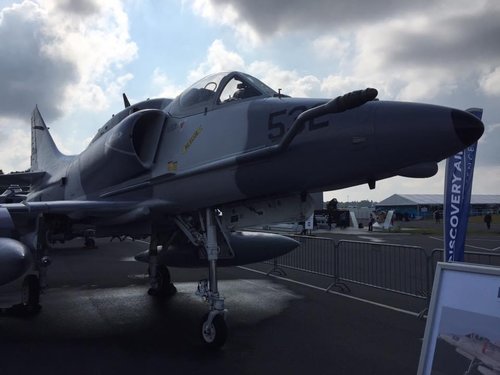
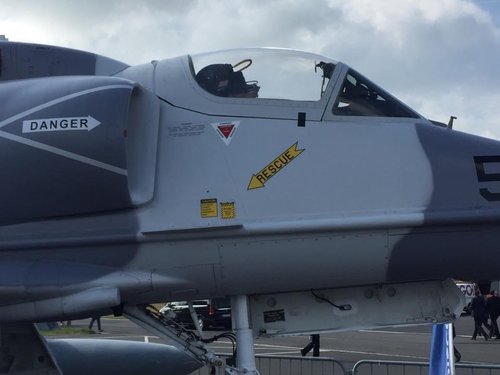
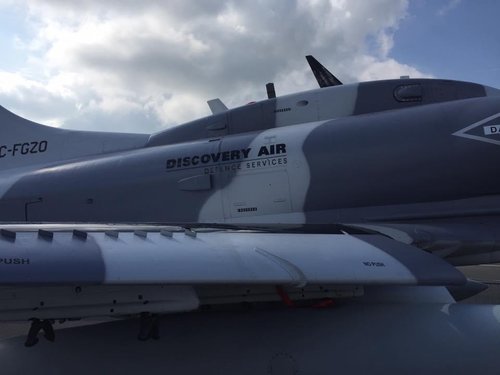
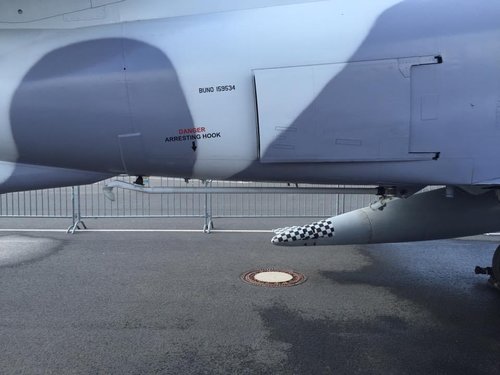
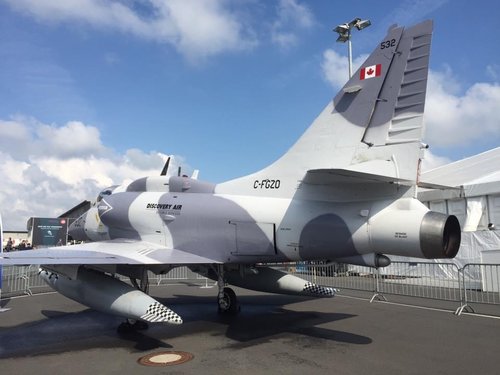
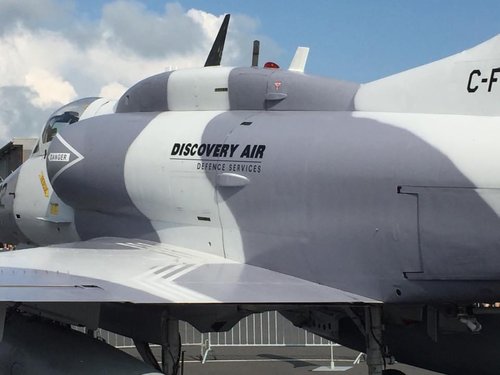
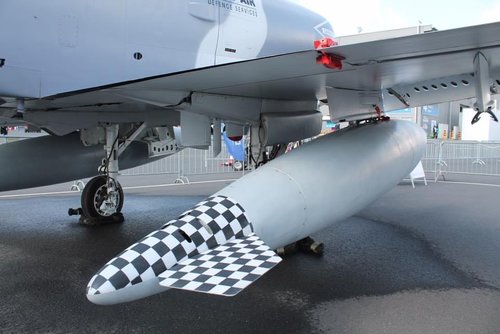
- Joined
- 11 March 2012
- Messages
- 3,251
- Reaction score
- 3,179
riggerrob: You grew up in the cauldron! Plenty of souverainistes will have cheered on the exodus of les Anglais and allophones. ....
Yes, souverainistes really "shot themselves in the foot" on that issue!
Hah!
Hah!
Their attitude was "we have been oppressed for 'X' hundred years, so now it is our turn to oppress others."
They started by chasing off their hated "anglais" overlords. But they failed to project that those hated "anglais" overlords controlled the major banks and corporations which quietly moved "big money" and corporate headquarters from Montreal to Toronto. Montreal soon became the SECOND largest city in Canada.
Hah!
Hah!
Even more amusing was souveraintistes' attitudes towards immigration. As "habitant" birth rates dropped - during the 1960s - they tried to attract immigrants from other Catholic, former French colonies. Lots of North Africans applied (Sengal, Chad, Algeria, Morocco, etc.) for immigration visas. These potential immigrants were Catholic and they spoke french, but HORROR OF HORRORS; they were black!!!
Hah!
Hah!
Quebec even set up their own, distinct Quebec immigration ministry.
The irony of habitant attitudes is that when I visited my home town (Lennoxville, Quebec) last year, there were few remaining anglophones my age. Half of the remaining anglophones were in retirement homes, but the streets were teeming with dark-skinned Somalis, Afghans and refugees from a dozen Middle-Eastern Wars!
Hah!
Hah!
I keep thinking of about the various projects that the navy projected for the late sixties . And the ironic thing.thing was that they basically building towards the naval side of the Infamous CAST.brigade.
I wonder if anyone in the Government ever looked back and realised that it might have actually be doable.
hindsight .heh!
I wonder if anyone in the Government ever looked back and realised that it might have actually be doable.
hindsight .heh!
Yes they did, to the point of doing onboard flight trials; the data from which the Australians were given and found to be useful in regards operating them off Melbourne. The Canadians even considered the A-7 though they never did any flight trials off of Bonnie, they did borrow a couple from the US along with a couple of A-4's.Did Canada ever consider the A4 Skyhawk for its carrier aviation and Norway reinforcement role (instead of F5)? Would have been able to operate with USN/USMC.
In one of my F-11 threads I posted a link to a google preview of a book detailing it in regards to the viability of operating Tiger off a mod majestic.
Oddly though the RCN were looking at using Skyhawk as an ASW aircraft.. Douglas had a proposal for a cheap fleet defense Skyhawk capable of firing sparrow but I am not sure if they pitched that at the Canadians or it was just mentioned close the Canadian part of the book excerpt... I am still half a pot of coffee down for the day and am not "braining" so good
super interesting that the looked at the Tiger.. nice to know I was not being a total lunatic thinking it might work off of Bonnie.by Jim Atwood
"In July 1957 I was posted to NDHQ-DAE to work with Cmdr Jim Hunter in the search for a new fighter to replace the Banshee. This study was appropriately named "Project Holy Grail". Jim had already looked at UK aircraft, one being the Saunders-Roe SR.177, a combined rocket/jet propulsion proposal (interesting by frightening), and I joined him to evaluate some US aircraft. We compared Bonaventure's capabilities with data from the Douglas A4D, Grumman F11F, North American Fury and Northrup N.156 (later developed into the CF-5).
Later in 1964, an A4E flight characteristics evaluation of some 8 hours was conducted by Dave Tate and Joe Sosnkowski at the Douglas facility in Palmdale, California. Following theses flights, in 1965, carrier suitability trials were flown by two USN pilots aboard Bonaventure. The results concluded that the A4E was acceptable for service use aboard Bonaventure under the operating conditions tested."
quoted from page 93 of "Certified Serviceable Swordfish to Sea King, The Technical Story of Canadian Naval Aviation by Those Who Made It So."
Written by Captain Rolfe G. Monteith CD, R.C.N. (Ret'd), edited by Peter Charlton and Michael Whitby.
Copyright 1995, CHATH Book Project,
ISBN 0-9699595-0-8
The book tells the story of RCN aircraft maintenance from the prospective of Air Engineering Officers.
Somewhere else I read that A4E could launch a full load with only 10 knots of wind across the flight deck of Bonaventure.
In my alternate history, circa 1956 at Point Mugu Canadair engineers send there for the Sparrow II realize (looking at the Skyrays there used for testing)
-the Skylancer looks like a "baby Arrow". They convince Canadian Westinghouse to take an APQ- 50 / 64 / 72 licence, with Sparrow III as backup. Canadian Westinghouse beat the crap out of RCA and unknowingly saves the Arrow program in 1956, although it is much scaled down.
-end result: the Arrow becomes the Skyray / Skylancer / Phantom "radar brother" thanks to the APQ family. When Sparrow II fails, the change to Sparrow III is done simply by switching from APQ-64 to APQ-72 !! And this rescues the Arrow from oblivion, right from 1957.
-the Skylancer if licence built could be an interesting replacement to both Sabres and CF-100s in Europe.
-the Skylancer could also benefit from Arrow tech transfers to offload some of that program mounting costs on a cheaper platform.
-meanwhile at CARDE Gerald Bull fire Arrow models from his 5-inch guns, find the fin is too short and send Avro engineers on the way to analog FBW.
-Bull and Canadair wonders if an analog FBW Skylancer (think of Mirage 2000 vs Mirage III level of handling improvements) could not operate out of Bonnie carrier... "yes, it can".
-by 1957 Douglas dumps the entire Skylancer program at Canadair, since it has no future in the USA for the USN
- Gerald Bull grows interested in FBW and helps it spreading across the world in the 1960's: long before OTL Concorde, F-16 and Mirage 2000...
-by 1959 CARDE is flying a FBW Skylancer with pretty astonishing results (landing speed drops from 180 kt to 140 kt). Soon Canadair gets orders for France Clemenceaus, and worlwide Colossus / Magestic users.
In the days of Vietnam the USN gets interested for late era Essex, too...
I wrote that alternate history for Big Gemini, but the Agena stole its thunder.
Same for the Arrow: the Skylancer stole the spotlight from it ! Blame Douglas, in both cases...
-the Skylancer looks like a "baby Arrow". They convince Canadian Westinghouse to take an APQ- 50 / 64 / 72 licence, with Sparrow III as backup. Canadian Westinghouse beat the crap out of RCA and unknowingly saves the Arrow program in 1956, although it is much scaled down.
-end result: the Arrow becomes the Skyray / Skylancer / Phantom "radar brother" thanks to the APQ family. When Sparrow II fails, the change to Sparrow III is done simply by switching from APQ-64 to APQ-72 !! And this rescues the Arrow from oblivion, right from 1957.
-the Skylancer if licence built could be an interesting replacement to both Sabres and CF-100s in Europe.
-the Skylancer could also benefit from Arrow tech transfers to offload some of that program mounting costs on a cheaper platform.
-meanwhile at CARDE Gerald Bull fire Arrow models from his 5-inch guns, find the fin is too short and send Avro engineers on the way to analog FBW.
-Bull and Canadair wonders if an analog FBW Skylancer (think of Mirage 2000 vs Mirage III level of handling improvements) could not operate out of Bonnie carrier... "yes, it can".
-by 1957 Douglas dumps the entire Skylancer program at Canadair, since it has no future in the USA for the USN
- Gerald Bull grows interested in FBW and helps it spreading across the world in the 1960's: long before OTL Concorde, F-16 and Mirage 2000...
-by 1959 CARDE is flying a FBW Skylancer with pretty astonishing results (landing speed drops from 180 kt to 140 kt). Soon Canadair gets orders for France Clemenceaus, and worlwide Colossus / Magestic users.
In the days of Vietnam the USN gets interested for late era Essex, too...
I wrote that alternate history for Big Gemini, but the Agena stole its thunder.
Same for the Arrow: the Skylancer stole the spotlight from it ! Blame Douglas, in both cases...
Last edited:
- Joined
- 11 March 2012
- Messages
- 3,251
- Reaction score
- 3,179
AVRO Canada also sketched a single-seater, single-engined light interceptor that looked like an F-106 or Mirage III. It was sort of a "baby Arrow" back-up plan, but never got off the drawing board.
AVRO Canada also sketched a single-seater, single-engined light interceptor that looked like an F-106 or Mirage III. It was sort of a "baby Arrow" back-up plan, but never got off the drawing board.
Do you mean the CF-104 ? (not the canuck lawn dart obviously).
by Jim Atwood
"In July 1957 I was posted to NDHQ-DAE to work with Cmdr Jim Hunter in the search for a new fighter to replace the Banshee. This study was appropriately named "Project Holy Grail". Jim had already looked at UK aircraft, one being the Saunders-Roe SR.177, a combined rocket/jet propulsion proposal (interesting by frightening), and I joined him to evaluate some US aircraft. We compared Bonaventure's capabilities with data from the Douglas A4D, Grumman F11F, North American Fury and Northrup N.156 (later developed into the CF-5).
super interesting that the looked at the Tiger.. nice to know I was not being a total lunatic thinking it might work off of Bonnie.Later in 1964, an A4E flight characteristics evaluation of some 8 hours was conducted by Dave Tate and Joe Sosnkowski at the Douglas facility in Palmdale, California. Following theses flights, in 1965, carrier suitability trials were flown by two USN pilots aboard Bonaventure. The results concluded that the A4E was acceptable for service use aboard Bonaventure under the operating conditions tested."
quoted from page 93 of "Certified Serviceable Swordfish to Sea King, The Technical Story of Canadian Naval Aviation by Those Who Made It So."
Written by Captain Rolfe G. Monteith CD, R.C.N. (Ret'd), edited by Peter Charlton and Michael Whitby.
Copyright 1995, CHATH Book Project,
ISBN 0-9699595-0-8
The book tells the story of RCN aircraft maintenance from the prospective of Air Engineering Officers.
Somewhere else I read that A4E could launch a full load with only 10 knots of wind across the flight deck of Bonaventure.
Yeah I'm pleased too, because there isn't much of a leap between a F-11F "basic" Tiger and a F4D Skyray. And from there, to my beloved Skylancer... with a touch of FBW.
I have a pdf somewhere about the decline of the RCAF. They say the Canadair Sabre replacement studies that led to the CF-104; at some point encompassed no less than 22 different types, all the way from G-91 to Buccaneer, F-105, N-156F... and Super Tiger came damn close from winning, according to all sources.
Yet they also insist it was essentially a game of fools: lots of smoke and mirrors. Never a truly fair or balanced competition.
Could the N-156 mentionned above be the N-156N, the one planned for the small and slow WWII US "jeep carriers" ?
Do you have an image?AVRO Canada also sketched a single-seater, single-engined light interceptor that looked like an F-106 or Mirage III. It was sort of a "baby Arrow" back-up plan, but never got off the drawing board.
- Joined
- 25 July 2007
- Messages
- 4,299
- Reaction score
- 4,197
Do you have an image?AVRO Canada also sketched a single-seater, single-engined light interceptor that looked like an F-106 or Mirage III. It was sort of a "baby Arrow" back-up plan, but never got off the drawing board.
I think riggerrob and Archibald are referring to a low-winged variant within the Avro Canada C.104 studies:
-- https://www.secretprojects.co.uk/threads/avro-canada-c-104-fighter-project.32503/
- Joined
- 11 March 2012
- Messages
- 3,251
- Reaction score
- 3,179
Yes!Do you have an image?AVRO Canada also sketched a single-seater, single-engined light interceptor that looked like an F-106 or Mirage III. It was sort of a "baby Arrow" back-up plan, but never got off the drawing board.
I think riggerrob and Archibald are referring to a low-winged variant within the Avro Canada C.104 studies:
-- https://www.secretprojects.co.uk/threads/avro-canada-c-104-fighter-project.32503/
Though the high-winged variant might also have been viable.
In an alternate universe, AVRO Canada builds small numbers of single-seater deltas on their way to learning how to build the CF-105 Arrow. This stretches out the Arrow project by many years, but it reduces the per-year investment and tames inter-service rivalries.
As a matter of fact, there were so many countless occasions (all lost) when the F-106, or its radar, or its missiles just screamed at the RCAF
"BUY MEEEEEE YOU IDIOT !!!"
But they didn't listened...
And I say that as a non rational, die hard fan of the Arrow !
"BUY MEEEEEE YOU IDIOT !!!"
But they didn't listened...
And I say that as a non rational, die hard fan of the Arrow !
- Joined
- 25 July 2007
- Messages
- 4,299
- Reaction score
- 4,197
As a matter of fact, there were so many countless occasions (all lost) when the F-106, or its radar, or its missiles just screamed at the RCAF
"BUY MEEEEEE YOU IDIOT !!!"
Okay, why? What useful role could a single-engined interceptor have performed for the RCAF?
The F-106 had a radius of action of just over 900 km. Based in the south, you are allowing potential adversaries to get awfully close to Canadian population centres. And I'm not seeing how 'forward deploying' short-range interceptors in the Canadian Arctic would be helpful.
Say you based those 'CF-106s' at Frobisher Bay (now Iqaluit) - the only modern airfield in the Canadian High Arctic at that time. Scrambling from YFB, the Delta Dart's combat range wouldn't even get you over Cyde River and back. What am I missing here?
- Joined
- 11 March 2012
- Messages
- 3,251
- Reaction score
- 3,179
The A-4 proposal is also mentioned in Volume 2 of "Hands to Flying stations, A recollective history of Canadian naval Aviation 1955 to 1969." by Stuart E. Soward. On pages 349 to 351, he mentions a combined RCN and RCAF group tasked with choosing the next ground attack airplane for both services. A-7 was first on the RCN's list, followed by A-4. There were still a few questions as to whether A-7 could fly from HMCS Bonaventure. CF was never seriously considered by RCN.
A-4 was number 4 on the RCAF's list with CF-5 a distant number 5.
But the A-4 proposal was quashed by a political decision to build CF-5s in Montreal.
Soward, Stuart E. "Hands to Flying Stations." (Neptune Developments, Victoria, 1993). ISBN 0-9697229-1-5
A-4 was number 4 on the RCAF's list with CF-5 a distant number 5.
But the A-4 proposal was quashed by a political decision to build CF-5s in Montreal.
Soward, Stuart E. "Hands to Flying Stations." (Neptune Developments, Victoria, 1993). ISBN 0-9697229-1-5
isayyo2
Lurker alert
- Joined
- 24 November 2011
- Messages
- 1,131
- Reaction score
- 2,331
Question to the better informed, what was stopping the A-4 (CA-4?) from being built in Montreal? Was it Douglas or the State Department blocking licensed production? The A-4 with its strengthened, corrosion resistant air frame seems like better pick for reinforcing NATO's northern flank over an F-5A/B derivative.But the A-4 proposal was quashed by a political decision to build CF-5s in Montreal.
- Joined
- 11 March 2012
- Messages
- 3,251
- Reaction score
- 3,179
CF-5 was supersonic and had 2 engines.Question to the better informed, what was stopping the A-4 (CA-4?) from being built in Montreal? Was it Douglas or the State Department blocking licensed production? The A-4 with its strengthened, corrosion resistant air frame seems like better pick for reinforcing NATO's northern flank over an F-5A/B derivative.But the A-4 proposal was quashed by a political decision to build CF-5s in Montreal.
Supersonic was perceived as better. In the end, CF-5s' only significant role was lead-in trainers for more expensive supersonic fighters: CF-101 Voodoo, CF-104 Starfighter and CF-18 Hornet.
Two engines were perceived as more reliable for long patrols int he Arctic. Too bad Cf-5 could not carry enough fuel for long patrols and the Canadian Forces did not have enough Boeing 707 tankers (only 2) to seriously support that Arctic mission.
Finally, before entering politics, Defense Minister Paul Hellyer had worked as an engineer at Northrup USA. How much he got in bribes and kick-backs was well-concealed (pure speculation my part). I believe that the only difference between Canadian politicians and Third-World, tin-pot dictators is that Canadian politicians are better at concealing bribes. Call me cynical!!!!!
- Joined
- 25 July 2007
- Messages
- 4,299
- Reaction score
- 4,197
"Defense Minister Paul Hellyer had worked as an engineer at Northrup USA."
Actually, Paul Hellyer never worked at Hawthorne. Hellyer did go to Inglewood in 1942 for further aeronautical engineering training at the then-new Northrop Aeronautical Institute. [1] He then returned to Ontario where Hellyer was employed as an aeronautical engineer at Fleet Aircraft from 1942 to 1944 (when he joined the RCAF).
So, Hellyer's time at Northrop was extremely brief. However, it was long enough to form a relationship with fellow student, Tom Jones. By the time Hellyer was MND, T.V. Jones was President and CEO of the Northrop Corporation. And, according to Major Ray Stouffer, in his CMJ piece, Paul Hellyer and the Selection of the CF-5 Freedom Fighter, [2] "close ties" continued between Hellyer and Jones.
"Supersonic was perceived as better."
By the RCAF, perhaps, but not necessarily by Hellyer. In a memo to his CDS, Hellyer wrote that “subsonic airplanes provide a higher cost-effectiveness ratio than supersonic on a basis that higher numbers of subsonic machines built for a given cost have better penetration possibilities than a small number of supersonic aircraft.”
A rather odd statement from a guy who initially supported Canadian-built Spey Phantoms to replace the CF-101 and CF-104 fleets. [3] However, despite that memo being addressed to ACM Frank Miller, I suspect that the intended audience was actually Walter Gordon and his staff at the Department of Finance.
"How much he got in bribes and kick-backs was well-concealed (pure speculation my part)."
I highly doubt that Hellyer was bent. He simply had an excessively high opinion of his own 'expertise' in Air Power Theory. And that was matched with a fervent desire for an independent military capable of supporting Canadian foreign policy goals ... which, in Hellyer's mind should not include placing top emphasis on the diktats of NATO or NORAD.
You can argue that Hellyer was barmy (personally, I'd say that diagnosis was complete with/after his fall). But I suspect that Hellyer's ego was far to large to be buffeted by the temptations of personal profit.
And lest we feel an excess of pity for Hellyer's put-upon CDS, let's remember that ACM Miller had been pushing for yet another rebuild of the RCAF's aged Fairchild C-119 transports. It was Hellyer who overruled Frank Miller and convinced the Pearson Cabinet to 'impose' the turboprop Lockheed Hercules on the RCAF instead.
___________________
[1] According to the CIA, by then, Hellyer had already graduated from the Curtiss-Wright Technical Institute of Aeronautics in nearby Glendale, CA.
[2] Canadian Military Journal, Vol. 10, No. 2, 2010. Unfortunately, Raymond Stouffer's unpublished 2005 PhD thesis from the RMC remains classified.
[3] Hellyer only cooled on the 'CF-4' plan when ACM Miller advocated paying for the Phantoms by pushing RCAF ' Caribou IIs' under the bus. (The ' Caribou IIs', of course, later became the DHC-5/CC-115 Buffalo.) Hellyer saw such medium transports being seen as ideal for supporting Pearson's favoured UN deployments. And that tactical transport was to be built in Hellyer's riding.
So, maybe you're not just cynical after all
Actually, Paul Hellyer never worked at Hawthorne. Hellyer did go to Inglewood in 1942 for further aeronautical engineering training at the then-new Northrop Aeronautical Institute. [1] He then returned to Ontario where Hellyer was employed as an aeronautical engineer at Fleet Aircraft from 1942 to 1944 (when he joined the RCAF).
So, Hellyer's time at Northrop was extremely brief. However, it was long enough to form a relationship with fellow student, Tom Jones. By the time Hellyer was MND, T.V. Jones was President and CEO of the Northrop Corporation. And, according to Major Ray Stouffer, in his CMJ piece, Paul Hellyer and the Selection of the CF-5 Freedom Fighter, [2] "close ties" continued between Hellyer and Jones.
"Supersonic was perceived as better."
By the RCAF, perhaps, but not necessarily by Hellyer. In a memo to his CDS, Hellyer wrote that “subsonic airplanes provide a higher cost-effectiveness ratio than supersonic on a basis that higher numbers of subsonic machines built for a given cost have better penetration possibilities than a small number of supersonic aircraft.”
A rather odd statement from a guy who initially supported Canadian-built Spey Phantoms to replace the CF-101 and CF-104 fleets. [3] However, despite that memo being addressed to ACM Frank Miller, I suspect that the intended audience was actually Walter Gordon and his staff at the Department of Finance.
"How much he got in bribes and kick-backs was well-concealed (pure speculation my part)."
I highly doubt that Hellyer was bent. He simply had an excessively high opinion of his own 'expertise' in Air Power Theory. And that was matched with a fervent desire for an independent military capable of supporting Canadian foreign policy goals ... which, in Hellyer's mind should not include placing top emphasis on the diktats of NATO or NORAD.
You can argue that Hellyer was barmy (personally, I'd say that diagnosis was complete with/after his fall). But I suspect that Hellyer's ego was far to large to be buffeted by the temptations of personal profit.
And lest we feel an excess of pity for Hellyer's put-upon CDS, let's remember that ACM Miller had been pushing for yet another rebuild of the RCAF's aged Fairchild C-119 transports. It was Hellyer who overruled Frank Miller and convinced the Pearson Cabinet to 'impose' the turboprop Lockheed Hercules on the RCAF instead.
___________________
[1] According to the CIA, by then, Hellyer had already graduated from the Curtiss-Wright Technical Institute of Aeronautics in nearby Glendale, CA.
[2] Canadian Military Journal, Vol. 10, No. 2, 2010. Unfortunately, Raymond Stouffer's unpublished 2005 PhD thesis from the RMC remains classified.
[3] Hellyer only cooled on the 'CF-4' plan when ACM Miller advocated paying for the Phantoms by pushing RCAF ' Caribou IIs' under the bus. (The ' Caribou IIs', of course, later became the DHC-5/CC-115 Buffalo.) Hellyer saw such medium transports being seen as ideal for supporting Pearson's favoured UN deployments. And that tactical transport was to be built in Hellyer's riding.
So, maybe you're not just cynical after all
- Joined
- 6 September 2006
- Messages
- 4,838
- Reaction score
- 9,476
Has anyone EVER brought a fighter post-1950 from any nation that didn't involve corruption/sweeteners/lubrication/blackmail/dodgy data/hush money/crooked evaluations/glossy brochures/conspiracy?
- Joined
- 11 March 2012
- Messages
- 3,251
- Reaction score
- 3,179
"... And lest we feel an excess of pity for Hellyer's put-upon CDS, let's remember that ACM Miller had been pushing for yet another rebuild of the RCAF's aged Fairchild C-119 transports. It was Hellyer who overruled Frank Miller and convinced the Pearson Cabinet to 'impose' the turboprop Lockheed Hercules on the RCAF instead.
___________________
[1] According to the CIA, by then, Hellyer had already graduated from the Curtiss-Wright Technical Institute of Aeronautics in nearby Glendale, CA.
[2] Canadian Military Journal, Vol. 10, No. 2, 2010. Unfortunately, Raymond Stouffer's unpublished 2005 PhD thesis from the RMC remains classified.
[3] Hellyer only cooled on the 'CF-4' plan when ACM Miller advocated paying for the Phantoms by pushing RCAF ' Caribou IIs' under the bus. (The ' Caribou IIs', of course, later became the DHC-5/CC-115 Buffalo.) Hellyer saw such medium transports being seen as ideal for supporting Pearson's favoured UN deployments. And that tactical transport was to be built in Hellyer's riding.
So, maybe you're not just cynical after all
Wandering off topic.
The RCAF's fleet of (only 35) C-119F Flying Box Cars had already been through one major over-haul/upgrade (C-119G with a huge radar nose). They were "tired" by 1960. Their R-4360 radial engines were maintainance hogs. The next upgrade should have included turb-prop engines. Did anyone ever try to install turbo-props on C-119s? Yes, we know about the jet booster engines retrofitted to a few military-surplus C-119s.
Hellyer's decision to replace C-119s with turbo-prop C-130 Hercules was wise.
Mind you, the RCAF never had enough transport airplanes to move a Rapid Reaction Force to Norway (NATO role), nor did the RCN have enough cargo ships to move an RRF to Norway.
- Joined
- 25 July 2007
- Messages
- 4,299
- Reaction score
- 4,197
Yes, a few years later than the RCAF timeframe, the USAF did feasibility studies on retrofitting twin Allison T56-A-7s to in-service C-119s. - https://www.secretprojects.co.uk/threads/fairchild-m-253c-transport.889/#post-6952
Fairchild itself may have proposed a turboprop version of its 4-engined XC-119H proposal - aimed at (but not actually submitted to) the contest won by the YC-130. - https://www.secretprojects.co.uk/th...-the-lockheed-c-130-hercules.339/#post-334983
Oddly the term 'TurboBoxcar' seems to have been applied to the 1957 Fairchild M-253 - based on the C-123 but powered by 4 x Lycoming T55 turboprops.
Since we're off-topic into transport aircraft, I'm wondering how the impact of the DC-6 on Northstar sales would have effected relations between Canadair and Douglas. In other words, would Canadair have actually wanted to build the Skyhawks?
Fairchild itself may have proposed a turboprop version of its 4-engined XC-119H proposal - aimed at (but not actually submitted to) the contest won by the YC-130. - https://www.secretprojects.co.uk/th...-the-lockheed-c-130-hercules.339/#post-334983
Oddly the term 'TurboBoxcar' seems to have been applied to the 1957 Fairchild M-253 - based on the C-123 but powered by 4 x Lycoming T55 turboprops.
Since we're off-topic into transport aircraft, I'm wondering how the impact of the DC-6 on Northstar sales would have effected relations between Canadair and Douglas. In other words, would Canadair have actually wanted to build the Skyhawks?
Similar threads
-
What if all three Canadian Services bought Sikorsky S-61 in 1963?
- Started by riggerrob
- Replies: 21
-
Avro CF-105 Arrow what-ifs
- Started by StraGen410
- Replies: 36
-
Canadian AN/xxx-5xx Equipment Designations (Aircraft-Related)
- Started by Apophenia
- Replies: 2
-
-

